Akari 25N
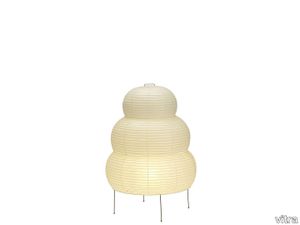
vitra > Styling
The Akari Light Sculptures (1951) by Isamu Noguchi are a series of luminaires, handcrafted from traditional washi paper by Japanese artisans. ‘The harshness of electricity is thus transformed through the magic of paper back to the light of our origin – the sun.’ (Noguchi)
Akari 3AD
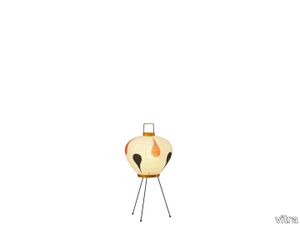
vitra > Styling
The Akari Light Sculptures (1951) by Isamu Noguchi are a series of luminaires, handcrafted from traditional washi paper by Japanese artisans. ‘The harshness of electricity is thus transformed through the magic of paper back to the light of our origin – the sun.’ (Noguchi)
Follow Me 1

vitra > Cabinet
Follow Me 1 is a robust mobile pedestal for both offices and home workspaces. A decorative pull strap makes it easy to move the trolley from place to place. The interior compartment (the height of one ring binder) can be concealed by pulling down the mobile pedestal's tambour shutter. Optional drawers and shelves can be individually configured. The taller Follow Me 2 version makes an ideal companion for standing-height tables.
Eames Fiberglass Armchair LAR
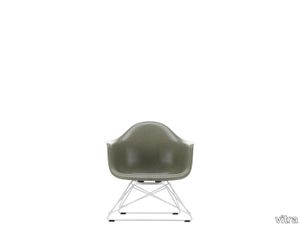
vitra > Chair
The Shell Chairs by Charles and Ray Eames are among the most important designs in the history of furniture. Following their initial presentation at the 'Low Cost Furniture Design' competition organised by the Museum of Modern Art in 1948, the chairs were launched on the market in 1950 in an armchair version (A-shell) and as a simpler side chair (S-shell) – making them the first ever mass-produced chairs made of plastic. <br/><br/>With the debut of this revolutionary design, Charles and Ray Eames introduced a new furniture typology that has since spread around the globe: the multifunctional chair whose shell can be joined with a variety of different bases. Already in 1950, they presented a series of bases that enabled various sitting positions, including the low-slung LAR (Lounge Height Armchair Rod Base) with a geometric steel wire base, which quickly acquired the charming nickname 'Cat's Cradle' in reference to the children's string game. <br/><br/>The LAR seems to have been one of Charles and Ray's favourite designs: it can be spotted in numerous vintage photographs of the legendary Eames House in Pacific Palisades, both indoors and out. This also reveals how lightweight the chair is, and how easily it can be moved around.<br/><br/>Due to the organic shape of this classic armchair, the LAR is a striking solo piece, but it can also be paired with many types of sofas to create an appealing contrast. The LAR is offered as the Plastic Chair LAR with a polypropylene shell, or as the Fiberglass Chair LAR with a fibreglass shell that draws attention to the lively texture so valued by connoisseurs. The fascination of fibreglass lies in its irregular surface, whose clearly visible fibres make it appear almost like a natural material. The Fiberglass Chair LAR is not offered with full upholstery in order to show off the unique characteristics of this material to maximum effect. However, a comfortable seat cushion is optionally available.
Miniatures Knotted Chair
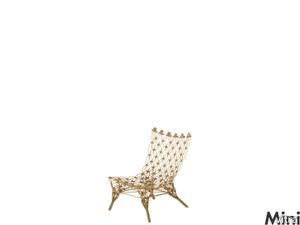
vitra > Styling
Knotted Chair is made of knotted netting soaked in artificial resin and simply hung out to dry. This produces a highly expressive seat shell which is as fragile, transparent and light as a hammock but is as solid as a seat should be. The use of simple knotted cords gives Knotted Chair that additional »warm«, personal feeling.<br/><br/>Wanders description of Knotted Chair: »The design is based on three innovations. Firstly, the process of hardening a textile in such a way that it can serve as a constructional element, becoming part of the structure of a three-dimensional product. Secondly, the use of knotting techniques to create curved, solid surfaces and structures. Thirdly, the manufacture of an industrial product made of plastic without resorting to a mould, but by simply making use of gravity and artificial resin as a stiffening agent.<br/><br/>Of course these factors are decisive in determining the quality of the chair. I personally, however, I am more enthusiastic about the chair's formal appeal and the meaning its external appearance lends it. It is a chair which tells you it was made for you alone, with a great deal of love, creativity and care, a chair which thus has its own personal and individual character, a chair which shows its relationship to you by letting you see different details every time you use it.
Fauteuil Direction Pivotant

vitra > Office Chair
The swivel seat of Fauteuil Direction Pivotant is height adjustable, and the backward tilt mechanism can be adapted to the individual user's weight. These features are paired with the generous upholstery to ensure optimum comfort. Leather or fabric covers are available in many different colours, making it easy to find the ideal chair for any type of business workplace or home office.
Akari 14A

vitra > Styling
The Akari Light Sculptures (1951) by Isamu Noguchi are a series of luminaires, handcrafted from traditional washi paper by Japanese artisans. ‘The harshness of electricity is thus transformed through the magic of paper back to the light of our origin – the sun.’ (Noguchi)
Wooden Doll No. 21

vitra > Styling
Alexander Girard originally created the Wooden Dolls (1952), a whimsical assortment of figures both joyful and grim, for his own home. Today they add a charming touch to any interior.
Wall Clocks - Ball Clock
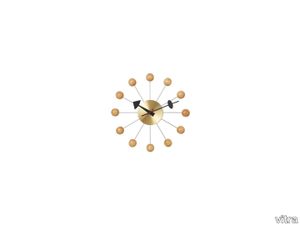
vitra > Styling
With his collection of Wall Clocks (1949-1960), George Nelson conceived a wide array of timepieces, many of which have since become icons of 1950s design.
Belleville Table

vitra > Table
The Belleville Tables by Ronan and Erwan Bouroullec (2015) are highly variable in appearance thanks to the diverse selection of table tops. Together with the Belleville Chairs they form a harmonious family of furnishings.
Mariposa 3-Seater
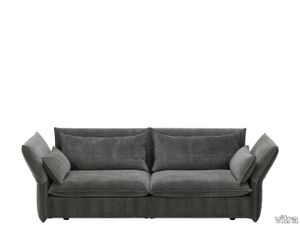
vitra > Sofa
The extraordinary comfort of the variously sized Mariposa sofas derives from their pleasantly soft upholstery and the adjustment mechanism in the arm and backrest elements. The expansive 3-seater provides plenty of space and invites users to stretch out lengthwise, using the adjustable armrests as a back or neck rest to relax and read or take a nap.
Akari 16A
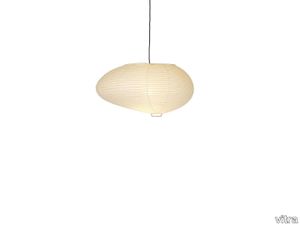
vitra > Styling
The Akari Light Sculptures (1951) by Isamu Noguchi are a series of luminaires, handcrafted from traditional washi paper by Japanese artisans. ‘The harshness of electricity is thus transformed through the magic of paper back to the light of our origin – the sun.’ (Noguchi)
HAL RE Studio

vitra > Chair
The HAL RE Studio swivel chair is part of the extensive HAL family of chairs designed by Jasper Morrison and a perfect choice for informal office settings, learning environments, healthcare institutions or the home office. The comfortable seat shell made of recycled plastic is easy to clean and can create striking colour accents. HAL RE Studio is height-adjustable, fitted with shock-absorbing seat suspension and is available with a plastic seat shell in a choice of hues.
Akari 55D
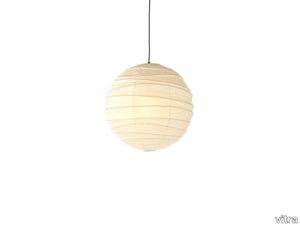
vitra > Styling
The Akari Light Sculptures (1951) by Isamu Noguchi are a series of luminaires, handcrafted from traditional washi paper by Japanese artisans. ‘The harshness of electricity is thus transformed through the magic of paper back to the light of our origin – the sun.’ (Noguchi)
Grand Executive Highback
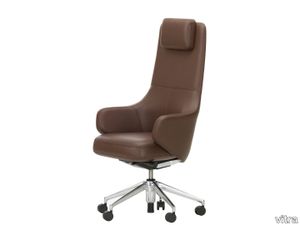
vitra > Office Chair
The prestigious Grand Executive armchair combines soft, high-quality leather upholstery with the individually adaptable FlowMotion mechanism for exceptional comfort. The Grand Executive Highback model is equipped with an adjustable neck cushion.
Toolbox RE
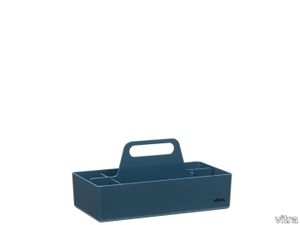
vitra > Styling
Toolbox RE is a practical organiser for storing and transporting small work utensils and accessories. It is made of recycled plastic from industrial waste – and at the end of its product lifespan, it is also 100% recyclable. Toolbox RE is available in a selection of colours.
HAL RE Cantilever
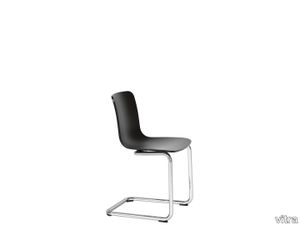
vitra > Chair
The characteristic flexing action of HAL Cantilever's base augments the comfort of this chair. The seat shell is made of recycled plastic and like many other HAL models, its comfort can be enhanced by padded upholstery or loose cushions from the Soft Seats range. HAL RE Cantilever is suited to a wide variety of settings and applications.
Wooden Doll No. 18

vitra > Styling
Alexander Girard originally created the Wooden Dolls (1952), a whimsical assortment of figures both joyful and grim, for his own home. Today they add a charming touch to any interior.
Repad
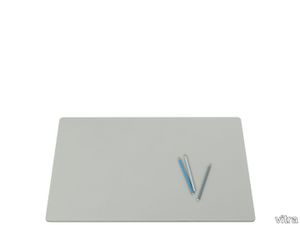
vitra > Styling
Vitra developed Repad with the designers Ronan and Erwan Bouroullec. It is not only suitable as a desk pad for assorted paper sizes, but also structures and defines the personal workspace as an underlay for a laptop or keyboard. <br/><br/>Repad is manufactured from bonded leather. For this recycled material, remnants from Vitra's furniture production are shredded and enriched with vegetable tanning agents, natural rubber, fats and water and then dried.<br/> <br/>Repad has the pleasant feel of real leather and comes in five colours: a natural hue and four variants with a colour-coated finish. The palette is coordinated with the materials of the <a href="/en-me/product/joyn-2">Joyn 2</a> office table system, but is also suited for use with any other table surface.
WorKit workstations
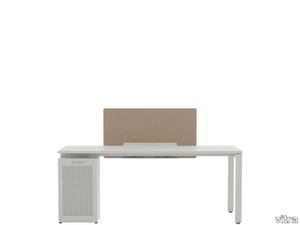
vitra > Chair
The WorKit office furniture system can be used to create versatile workstations for individuals and teams. Cleverly designed, the tables can be easily adapted to user requirements. Add-on tops allow for meeting configurations to promote communication, while central and lateral screens separate the table into process-related workstations – for individual niches or team benches of different sizes.
Prismatic Table

vitra > Coffee table
Following a purely geometric design, the Prismatic Table takes inspiration from traditional Japanese paper folding techniques. The side table comprises three elements made of folded sheet aluminium with a high-quality powder-coated finish. Joined together they form a three-legged table with a hexagonal top. <br/><br/>Isamu Noguchi originally designed the Prismatic Tables in a combination of different colours, which reveal captivating kaleidoscope-like patterns when the tables are arranged together. Vitra has returned to this original idea and now produces the Prismatic Table in three versions, each featuring three parts in different combinations of muted shades of grey.
Follow Me 2

vitra > Cabinet
Follow Me 2 is a tall mobile pedestal for use at stand-up workstations. A decorative pull strap makes it easy to move the robust Follow Me 2 from one place to another. The interior compartment (the height of two ring binders) can be hidden behind the mobile pedestal's tambour shutter. Optional drawers and shelves can be individually configured. The shorter Follow Me 1 version is suited for storage under standard-height tables.
Silhouette Mermaid
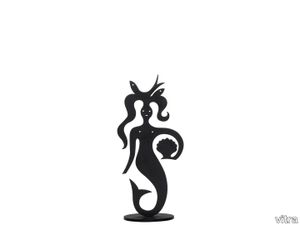
vitra > Styling
In 1965 Alexander Girard has created a series of charming metal figures that appear to be dancing: Silhouettes.
Home Desk
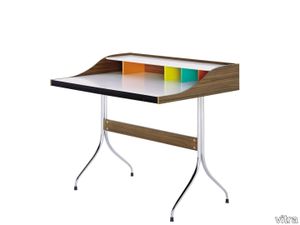
vitra > Desk
High-quality materials emphasise the graceful refinement of the Home Desk by George Nelson, originally designed in 1958 as a lady's writing table. Today the compact desk tends to be used in home offices, where it adds an appealing decorative accent with its multicoloured compartments.
Miniatures Coconut Chair
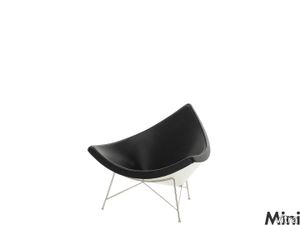
vitra > Styling
In contrast to the trend of adapting sitting furniture to the requirements of the human body, George Nelson designs sitting objects from the formal repertoire of spontaneous, popular everyday culture. The shapes he used were strongly stimulated by the art of the 1950s. His symbolic statements promoted a new, very casual form of sitting. Nelson's Coconut Chair was inspired by the coconut shell. The seat consists of a glass-fibre reinforced plastic shell with upholstery. The three-legged base of tubular steel is stabilized using fine crossbars. One has the impression that the frame spans the floating, swinging form taut and fixes it to the floor.
Metal Side Tables Outdoor
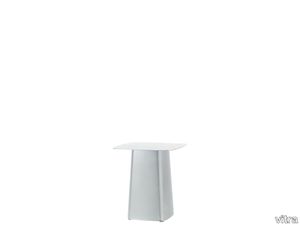
vitra > Outdoor furniture
The outdoor versions of the Metal Side Tables, designed by Ronan and Erwan Bouroullec, have a matt powder-coated finish and are available in a separate range of colours from the highly-polished indoor versions. An additional version with a non-coated galvanised surface is also available. The combination of thin table tops and plinth-like bases generates an appealing contrast.
Cork Bowl, small
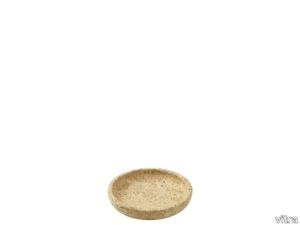
vitra > Styling
Turned from pure cork, the Cork Bowls (2020) by Jasper Morrison come in two sizes and can be used as shallow bowls or trays.
Classic Trays - Dot Pattern light
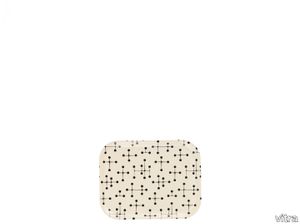
vitra > Styling
The Classic Trays (1945-74) by Alexander Girard and Charles and Ray Eames come in three sizes. Made of laminated plywood, they feature motifs from the rich store of images created by these legendary designers.
Girard Ornaments - Dove
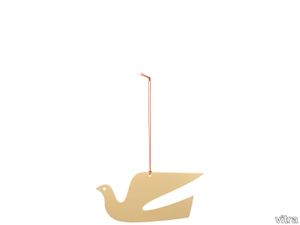
vitra > Styling
The range of motifs does not limit the use of Ornaments by Alexander Girard to seasonal occasions but a number of them are perfect, for example, for Christmas time.
Miniatures Organic Armchair
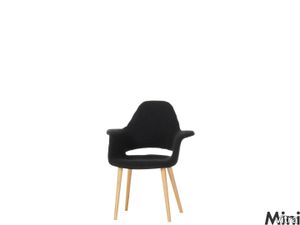
vitra > Styling
The »Organic Armchair« was a submission for the Museum of Modern Art‘s 1940 design competition for »Organic Design in Home Furnishings«. Charles Eames and Eero Saarinen, who that year worked together for the first time, won first prize with their »Organic Armchair«. One of the conditions for competition entries was that the object was suitable for industrial production.<br/><br/>In 1941, the Eames developed a method for threedimensional molding of manufacture the award-winning chair. The 3-D seat, made possible by means of incisions made in the veneer and cutting pieces out of it, was covered in foam rubber and upholstered in fabric. As a result of the war-time economy and the initially high manufacturing costs, despite the original competition brief the prototypes did not go into series production.
Key Ring Sun
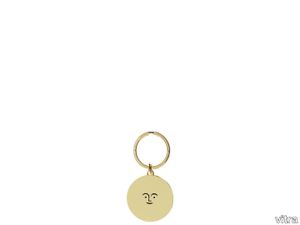
vitra > Styling
The metal Key Ring Sun bears the image of a smiling sun. The motif was created by the American mid-century designer Alexander Girard in 1966 and used for a variety of purposes.
Suita Ottoman & Daybed
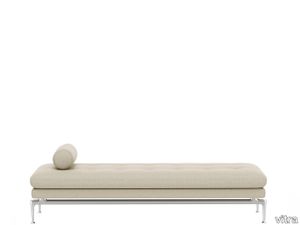
vitra > Bed frame
Characterised by an elegant technological aesthetic, the Suita sofa family (2010/2019) by Antonio Citterio comprises many different components. These can be freely combined or also used as independent elements.
Eames Plastic Side Chair LSR
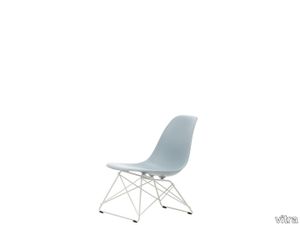
vitra > Chair
The compact Plastic Chair LSR was a favourite of Charles and Ray Eames: they used the low chair throughout the Eames House, their legendary home in Pacific Palisades, as needed and especially when engaging in conversation with guests. The Plastic Chair LSR – unlike the Fiberglass Chair LSR – can be utilised both indoors and out.
Eames Coffee Table
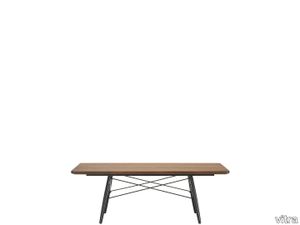
vitra > Coffee table
The premium-quality tops of the Eames Coffee Table by Charles and Ray Eames are available in rectangular or square versions in either palisander veneer, marble or solid American walnut. The wooden legs accentuate the understated elegance of this refined coffee table.
Miniatures Diamond Chair
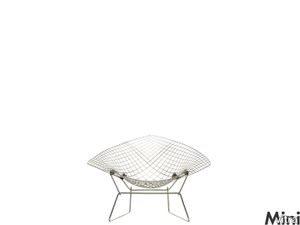
vitra > Styling
Harry Bertoia, who came from Italy, originally dedicated himself to sculpting. He created a series of chairs and seats using techniques he was familiar with from gold work and sculpting with iron wire. Until 1953 he developed these ideas together with specialists from the Knoll company until they were ready for mass production.<br/><br/>The structure of the »Diamond Chair« clearly separates the different functions of the chair: the transparent wire shell is bent out of a quadratic lattice into an organically shaped diamond like a net frozen in space, and the base of round iron embraces it like a polished diamond. <br/><br/>Bertoia considered his furniture to resemble his sculptures and explained: »In chairs many functional problems have to be solved first, but basically chairs are also studies in space, form and metal. On close inspection it becomes clear that they are mostly made up of air. Space flows right through them.«
Eames Plastic Armchair RAR
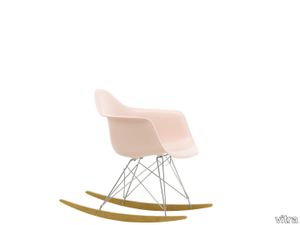
vitra > Chair
The Plastic Chairs number among the most well-known designs by Charles and Ray Eames. One model has always stood out in this large family of chairs: the Rocking Armchair Rod Base (RAR). Despite compact dimensions, it offers pleasant comfort even for taller users, and is also available with a seat cushion or full upholstery. The RAR is a fully-fledged armchair, whose iconic shape and rocker base on wooden runners adds a striking accent to any living room.
Joyn 2 Platform

vitra > Table
The Joyn 2 Platform serves as a basis for teamwork, and despite just four legs allows table lengths of up to 6.4 metres for 8 to 10 regular workspaces – with maximum legroom, easily accessible power and data options and diverse accessories for personalisation. The platforms emphasise the horizontal – only the accessories rise above the table surface.<br/> <br/>Joyn 2 Platform is modular in design and easy to reconfigure in diverse formats. The table tops are available in three versions: as one-piece tops, as tops with a gap in the middle for easy access to power and data connections, and as a version with a technical rail – in the latter two versions, accessories can be fitted individually and repositioned as required. End table tops measuring 80 cm in depth add an additional fully-fledged workstation at either end of the table. Joyn 2 Platform can be adjusted from 74 to 82 cm in height.<br/>
Tip Ton Limited Print
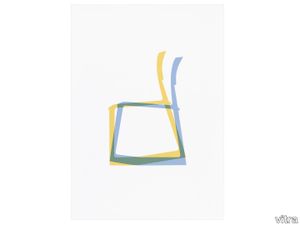
vitra > Styling
For the Tip Ton Limited Print, designers Edward Barber and Jay Osgerby have superimposed one of their early sketches in different colour layers in order to convey the movement of the chair in the illustration. The limited print is restricted to 50 numbered copies signed by Barber and Osgerby. The motif is additionally available as a standard poster.
Seat Dots
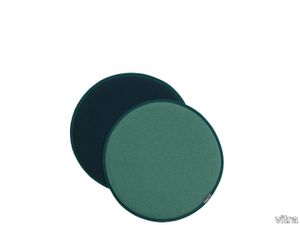
vitra > Styling
The Seat Dots by Hella Jongerius are round, universal seat cushions. They have thin upholstery padding and come in a wide selection of bold or subdued colour combinations to suit every taste and interior.
Herringbone Vessels - Vase ribbed
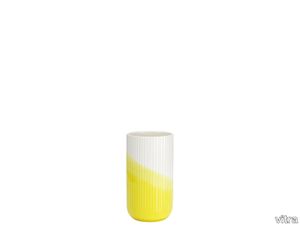
vitra > Styling
The Herringbone Vessels are created by repeatedly immersing ceramic bowls and vases in a coloured glaze. This process yields a pattern with an intrinsic logic, determined by the dipping angle as well as the shape and weight of the piece. As the dyeing process is performed entirely by hand, each bowl and vase in the Herringbone Collection is a unique object.
Wooden Doll No. 8
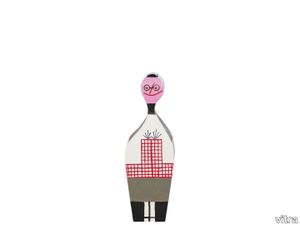
vitra > Styling
Alexander Girard originally created the Wooden Dolls (1952), a whimsical assortment of figures both joyful and grim, for his own home. Today they add a charming touch to any interior.
Miniatures Stuhl W1

vitra > Styling
Dutch designer Mart Stam produced the first prototypes for a cantilevered chair in 1926, using sawed-off gas pipes which he linked with elbow butting. The base frame, legs, seat and back-rest were created by a continuous loop bent at right angles.<br/> In 1927 Stam had his design produced by the L. & C. Arnold company, which also featured it in their sales program for a year. Unlike the prototype, the Arnold chair was made from a single piece of tubular steel with a diameter of just 20 mm, and with walls 2 mm thick. The bends in the tube had to be reinforced with solid iron rods, and thus lacked any springiness. The chair was painted black or grey, and, with its covering of rubber or coarse fabric, had a rather unassuming appearance.
Miniatures Aluminium Chair
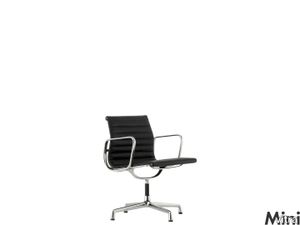
vitra > Styling
The furniture making up the indoor-outdoor group goes back to an idea by Alexander Girard and Eero Saarinen, who were looking for furnishings to harmonize with the house they had just completed for Irvin Miller. Girard, one of whose interests as an architect was landscape gardening, complained that though there was a good choice of furniture for interiors, there was nothing to grace attractive patios – and no decent garden furniture. <br/><br/>Charles Eames became preoccupied with this problem until one day during a flight he came up with the idea of an aluminium frame construction combined with a material »seat«. He wanted to develop a shape following the natural lines of the body, not however as a hard shell, but as a resilient length of material stretched between two supports which trace the body's natural form. A narrow plastic strip extending the length of the material acts as reinforcement. The material is held in place by insertion into slits on the frame's outer edge. <br/><br/>Experiments with different covering materials later resulted in an upholstered sandwich construction consisting of two layers of »Nauga hide« with a thin filling of vinyl-foam and vinylwadding stitched at intervals of 1 7/8 inches using a high-frequency welding technique. Originally conceived for outside use, the first aluminium easy chairs to be mass produced, are today used solely in interiors.
Eames Plastic Armchair LAR
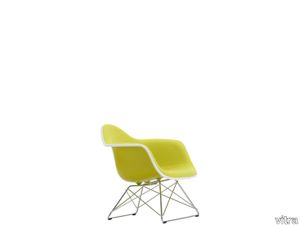
vitra > Chair
The Plastic Chairs by Charles and Ray Eames are among the most important designs in the history of furniture. Following their initial presentation at the 'Low Cost Furniture Design' competition organised by the Museum of Modern Art in 1948, the chairs were launched on the market in 1950 in an armchair version (A-shell) and as a simpler side chair (S-shell) – making them the first ever mass-produced chairs made of plastic. <br/><br/>With the debut of their Plastic Chairs, Charles and Ray Eames introduced a new furniture typology that has since spread around the globe: the multifunctional chair whose shell can be joined with a variety of different bases. Already in 1950, they presented a series of bases that enabled various sitting positions, including the low-slung LAR (Lounge Height Armchair Rod Base). <br/><br/>The LAR seems to have been one of Charles and Ray's favourite designs: it can be spotted in numerous vintage photographs of the legendary Eames House in Pacific Palisades – both indoors and out. This also reveals how lightweight the chair is, and how easily it can be moved around.<br/><br/>Thanks to its compact dimensions, the Plastic Chair LAR can also be used in smaller interiors, and the wide choice of colours for the shell, upholstery fabric, and base can be coordinated with diverse styles and settings. The steel wire base, which achieves maximum stability with minimum materials, acquired a charming nickname within just a short time on the market as a result of its unusual form: 'Cat's Cradle' – in reference to the children's string game.<br/><br/>Due to the organic shape of this classic armchair, the LAR is a striking solo piece, but it can also be paired with many types of sofas to create an appealing contrast. Especially in the version with full upholstery, the LAR offers long-lasting comfort, making this modestly sized armchair an excellent seating option for any living space.
AC 5 Work
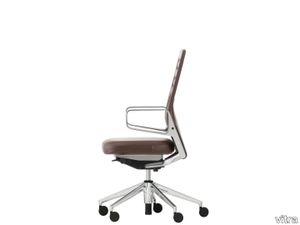
vitra > Chair
The elegant office swivel chair AC 5 Work is equipped with a range of sophisticated functions that not only guarantee healthy seating comfort, but are also discreetly out of sight. This clean look enhances the graceful lines of AC 5 Work, whose distinctive design and uncompromising functionality make it a perfect seating option for well-appointed offices.<br/><br/>The sophisticated structure of the AC 5 Work backrest with three different zones – lumbar zone, sink-in zone and shoulder zone – provides optimum support for the neck and prevents muscle tension. Further ergonomic features of AC 5 Work include the FlowMotion mechanism with synchronised forward tilt and seat depth adjustment, as well as the innovative FreeFloat armrests.<br/>
Trays
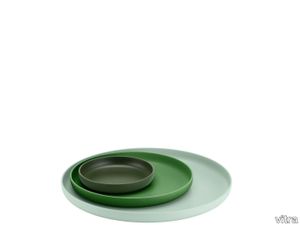
vitra > Styling
The Trays (2018) are flat dishes made of plastic, developed as a set of three in carefully harmonised colours and sizes by Jasper Morrison in line with his 'super normal' design philosophy.
Miniatures Little Beaver
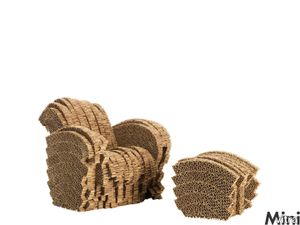
vitra > Styling
Cardboard furniture as an inexpensive and light alternative to traditional furniture already appears as early as the 1960s. Most designs aimed at lending the cardboard the necessary stability through insert and folding techniques. <br/><br/>Gehry chose a different method, which gave birth to sturdy cardboard furniture like carboard sculptures: »One day I look in my office at a pile of corrugated cardboard, the material I normally used to make architecture models, and I began to experiment with it, to stick it together and to cut it into shape with a hand saw and a penknife«. Following his »Easy Edges« from 1972, a series of extraordinarily sturdy cardboard furniture with a smooth surface, from the end of the 1970s onwards Gehry once again devoted his attention to the use of corrugated cardboard as a material for making furniture.<br/><br/>»Experimental Edges« was the name given to unusually expansive armchairs and easy chairs with a rough, ragged- looking surface. Strips of thick cardboard usually used as the filling for door leafs were sawn or cut vertically to the corrugation lines and fashioned into solid volumes of varying shapes. Using this method, single items or small series of furniture were created, which were both furniture sculptures and surprisingly comfortable chairs and sofas.
Robots 1:2
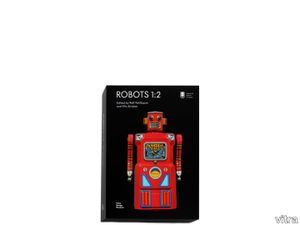
vitra > Styling
'Robots 1:2' is a catalogue presenting the toy robots of the R. F. Robot Collection at the Vitra Design Museum. Rolf Fehlbaum, Chairman Emeritus of Vitra and founder of the Vitra Design Museum, describes the objects he has avidly collected over the decades as 'small kinetic sculptures of great originality'. Robots 1:2 showcases each piece on a scale of 1:2, with the largest robot in the collection determining the size of the book. The catalogue also includes images of the original packaging, whose illustrations depict the evolution of our futuristic fantasies and notions of a future that has long since been consigned to the past.
Akari 1A
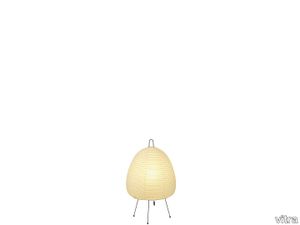
vitra > Styling
The Akari Light Sculptures (1951) by Isamu Noguchi are a series of luminaires, handcrafted from traditional washi paper by Japanese artisans. ‘The harshness of electricity is thus transformed through the magic of paper back to the light of our origin – the sun.’ (Noguchi)
